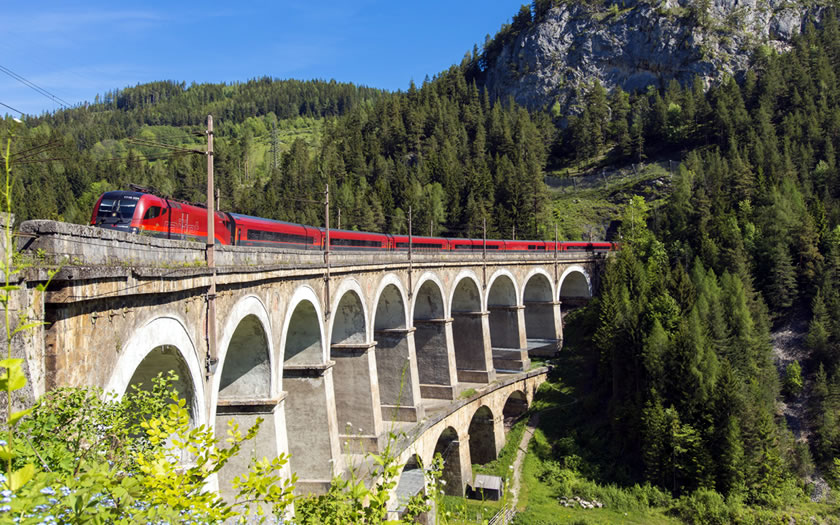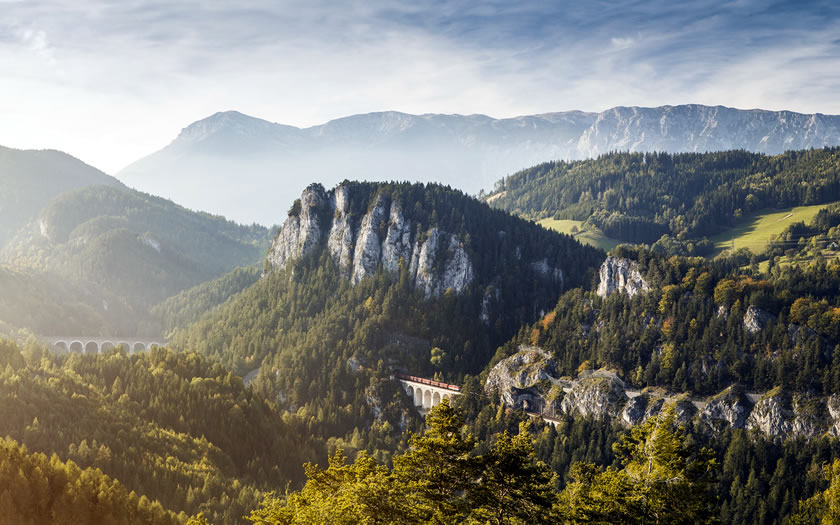The Semmering railway, once the world’s first high-mountain railway, shaped the history of Semmering in Lower Austria.
The first train travelled from Vienna over the mountain route at Semmering in the Viennese Alps in 1854. It took around seven years for 10,000 men and women to build the route planned by Carl Ritter von Ghega.
A technical masterpiece, the railway overcomes 459 metres of altitude on the route from Gloggnitz to Mürzzuschlag, passes over 100 arched bridges, 16 viaducts and through 15 tunnels.
Soon the railway brought a tourist boom. The high society of the fin de siècle period loved to spend their summer holidays on the Semmering. Among the famous guests of that time were Sigmund Freud, Oskar Kokoschka, Alma Mahler-Werfel and Arthur Schnitzler.
Today’s visitors have several opportunities to learn more about the history of the Semmering Railway, which has been a UNESCO World Heritage Site since 1998. An audio guide tells train passengers more about the special features during their journey on the Semmering line.

© Wiener Alpen | Walter Strobl
The railway hiking trail is the best choice for walkers. Starting at Semmering station, it leads to impressive vantage points such as the “20 Schilling View”: this view of the “Kalte Rinne” viaduct was once depicted on the 20 Schilling note, hence the name.
Insights are also provided by the small World Heritage Information Centre at Semmering station, the Ghega Museum in Breitenstein at the foot of Semmering and an app that tells the story of the railway from the perspective of the designer Carl Ritter von Ghega.
More information: www.wieneralpen.at





